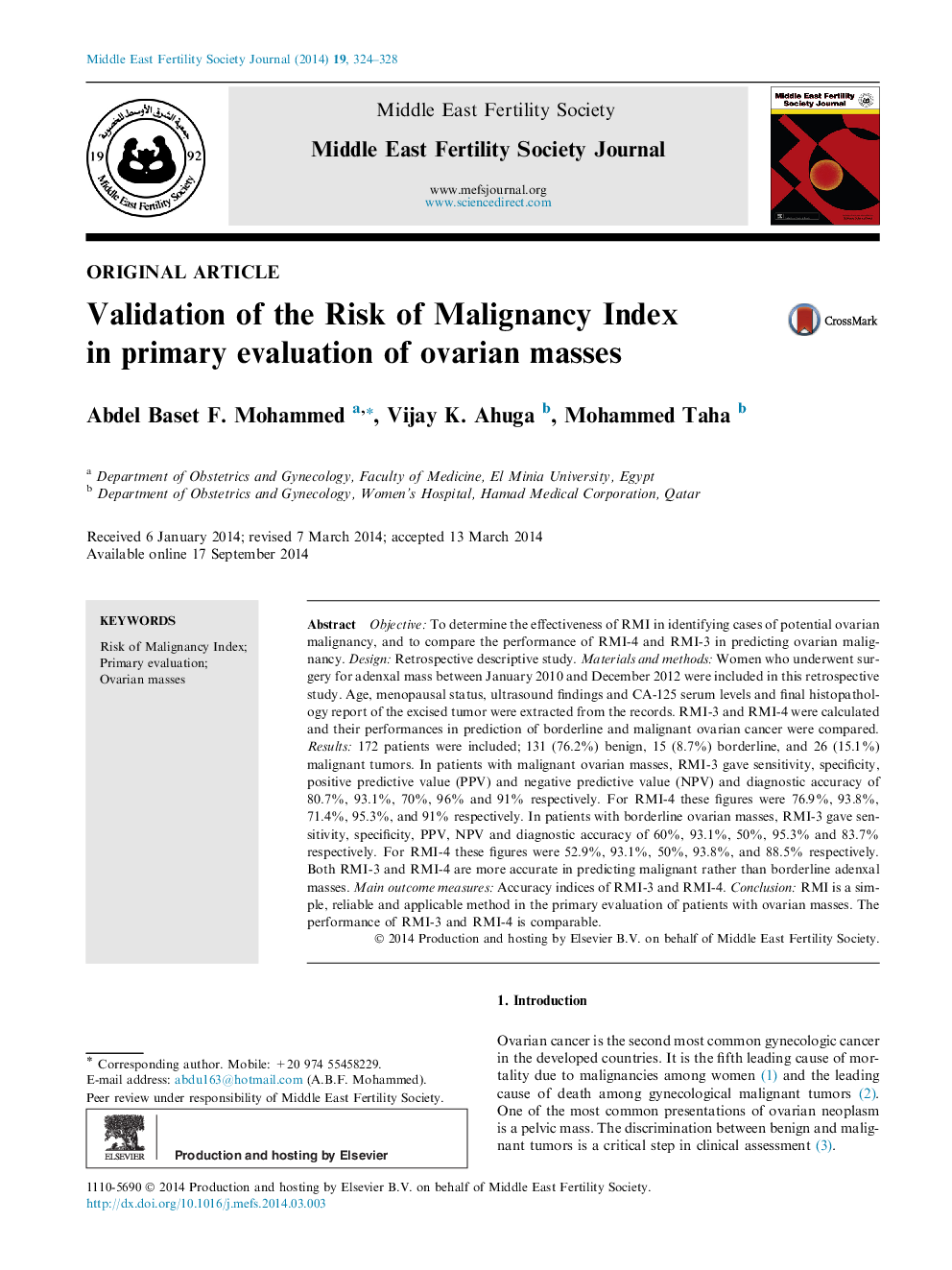| Article ID | Journal | Published Year | Pages | File Type |
|---|---|---|---|---|
| 3966122 | Middle East Fertility Society Journal | 2014 | 5 Pages |
Objective: To determine the effectiveness of RMI in identifying cases of potential ovarian malignancy, and to compare the performance of RMI-4 and RMI-3 in predicting ovarian malignancy. Design: Retrospective descriptive study. Materials and methods: Women who underwent surgery for adenxal mass between January 2010 and December 2012 were included in this retrospective study. Age, menopausal status, ultrasound findings and CA-125 serum levels and final histopathology report of the excised tumor were extracted from the records. RMI-3 and RMI-4 were calculated and their performances in prediction of borderline and malignant ovarian cancer were compared. Results: 172 patients were included; 131 (76.2%) benign, 15 (8.7%) borderline, and 26 (15.1%) malignant tumors. In patients with malignant ovarian masses, RMI-3 gave sensitivity, specificity, positive predictive value (PPV) and negative predictive value (NPV) and diagnostic accuracy of 80.7%, 93.1%, 70%, 96% and 91% respectively. For RMI-4 these figures were 76.9%, 93.8%, 71.4%, 95.3%, and 91% respectively. In patients with borderline ovarian masses, RMI-3 gave sensitivity, specificity, PPV, NPV and diagnostic accuracy of 60%, 93.1%, 50%, 95.3% and 83.7% respectively. For RMI-4 these figures were 52.9%, 93.1%, 50%, 93.8%, and 88.5% respectively. Both RMI-3 and RMI-4 are more accurate in predicting malignant rather than borderline adenxal masses. Main outcome measures: Accuracy indices of RMI-3 and RMI-4. Conclusion: RMI is a simple, reliable and applicable method in the primary evaluation of patients with ovarian masses. The performance of RMI-3 and RMI-4 is comparable.
